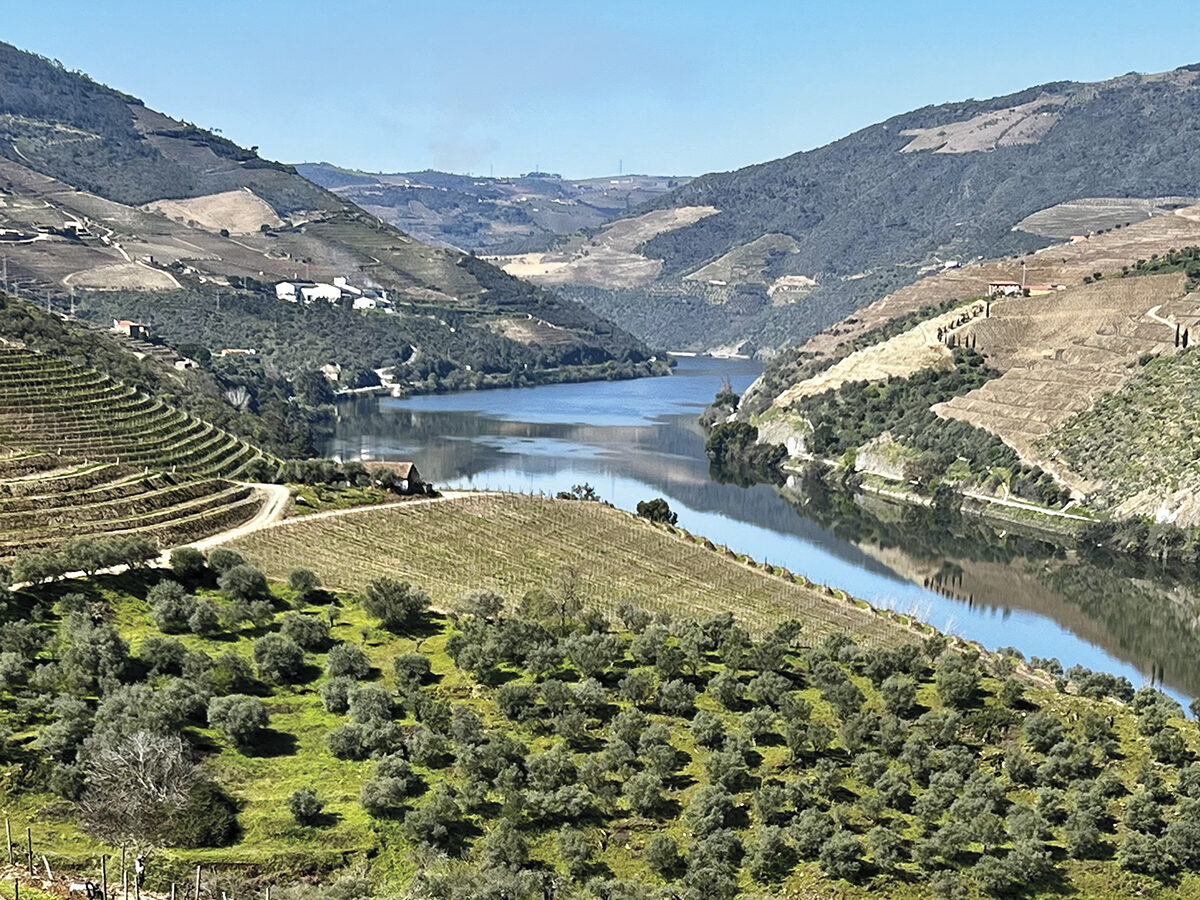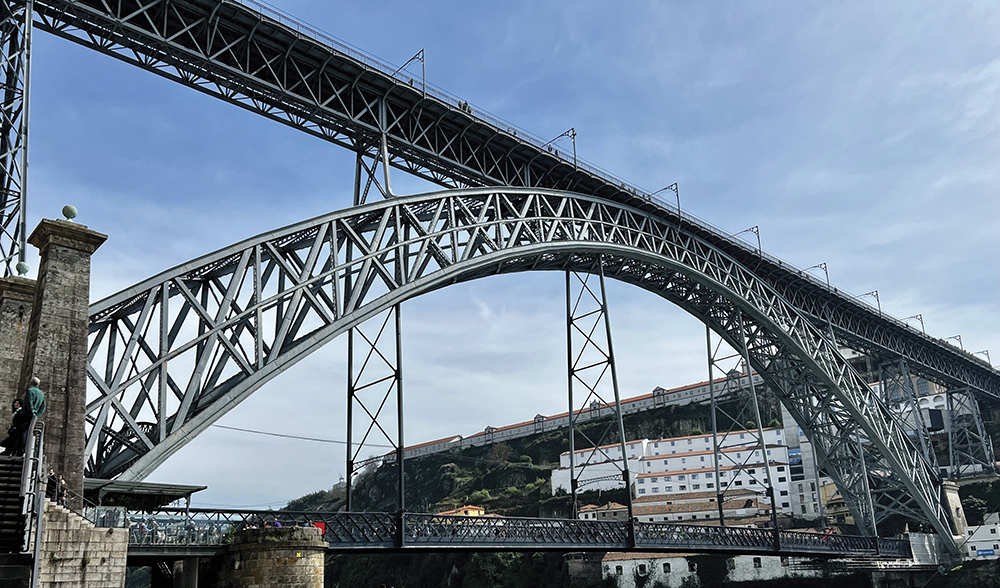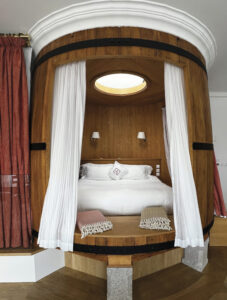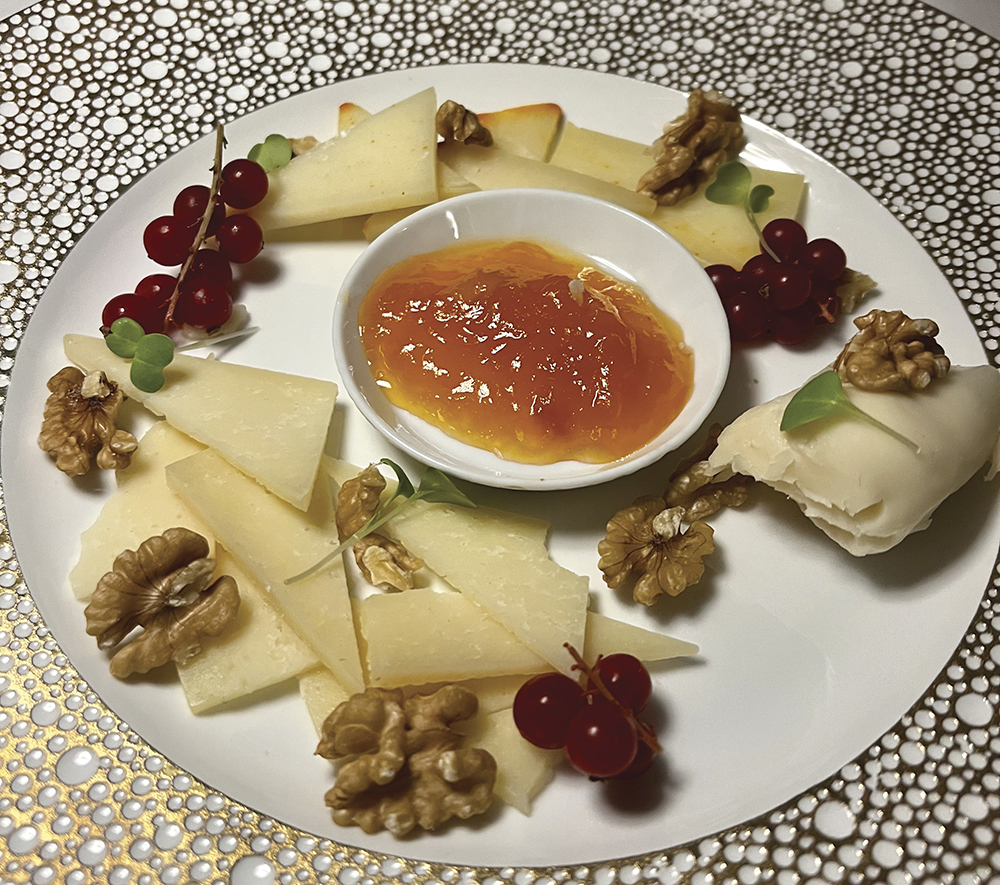It’s not a place. It’s a feeling. Residents and tourists share this description of northern Portugal’s Old City of Porto, and its magnificence cannot be disguised. That declaration resonates each morning until the late hours of the evening when one looks out to the River Douro from myriad premier viewing spots from Vila Nova de Gaia.
Porto’s medieval city charm comprises its magnificent river and six iconic bridges, including Ponte Dom Luis I, designed by a German disciple of Gustave Eiffel, with a lower level for foot traffic. While crossing the River Douro via footbridge is a rite of passage, taking a rabelo from Ribeiro do Porto to Cais de Gaia connects one to the history of Porto’s top export— fortified wine.
Both rabelos and Port are symbols of Porto’s history. These canoe-shaped, wide-bellied boats with a pronounced arch at each end have transported barrels of wine on the River Douro since the 1600s. When the waters were choppy, the wine sloshed out of the barrels, exposing it to oxygen. To avoid arriving in England with oxidized wine, the barrels were topped off with brandy from Spain–and fortified wine was born.
Across the River Douro from the historic center of Porto, a row of Port houses and caves along the harborside of Vila Nova de Gaia are where old, blackened barrels and casks preserve various blends and styles of fortified wines. Per the European Union Protected Designation of Origin (PDO), only wines from Portugal can be labeled as Port, and its recipe is convoluted. First, Port’s fortification has stayed the course in history, adding brandy from Spain or France, a decision made independent of each Port house. Approximately 20 percent of wine spirits are added to a blend of grapes harvested in the Douro Valley. The brandy ceases the fermentation of the wine, creating a distilled product that, dependent upon how it’s stored, can be immediately consumed upon bottling or saved in a cellar for decades to come. The categories of Port include white, ruby, late-bottled vintage, and aged tawny versions, among others.
With over 250 grape varietals that grow in Portugal, 30 are traditionally used to create Port. Dozens of Port houses in Vila Nova de Gaia ensure that Port is plentiful for guests who visit to taste and explore. To gain a firsthand experience of Port is to visit the two most important regions involved, Vila Nova de Gaia for the cellars and the hilly vineyards in the Douro Valley, about an hour’s drive away.
WHERE TO STAY
In Vila Nova de Gaia, The Yeatman Resort is framed by wind-tipsy Cypress trees perched on a hill across the cobblestone street that leads to Taylor’s Port House. The Yeatman was built with sustainability in mind and is owned by the Fladgate Group, which includes Taylor’s Port Cellars. Each of its guestrooms is named after a Port house partner. The resort’s spacious verandas and Eiffel-esque iron design touches add to the ambiance of its premier views of the River Douro and Spanish-tile terracotta rooftops of The Golden City. Each of this resort’s nine floors is a museum unto itself, with artwork at every turn and a center staircase of elegance. On the eighth floor is a private wine education space, and on the ninth floor is the lobby and wine shop. The resort spa includes a Turkish hammam and infinity indoor pool plunge, accessed via a wine-cask staircase. Body-contoured, heated tile lounge structures extend the benefits of a spa treatment, as will a detox tea and time spent in the relaxation room that overlooks the magnificent river and city views. // www.theyeatman.com
To fully grasp the origins of Port, head to where the grapes thrive in Quinta Sao Luiz in the Douro Valley, about an hour or so drive (or train ride) from Porto to The Vine House, which is surrounded by shist-ledged vineyards overlooking the Douro River. Springtime or autumn months are the best times to visit and marvel at the rows of grapevines— each vine a different varietal, and where the blending begins in the soil. // www.booking.com/hotel/pt/quinta-de-sao-luiz-the-vine-house.html#map_closed
WHERE TO DINE
In 1828, a civil war determined the democracy of Porto. Today, 1828 is one of the restaurants inside WOW, and its servers are dressed in battle uniforms. The décor rivals the river views below, and on the menu are Port-pairings with smoked meats, including a four-year aged beef. // www.wow.pt/pt/restaurantes/restaurante-1828
The glass-encased restaurant, Uva (translation: ‘grape’), is part of Cálem Cellars. Its location is steps from the Port house on the river’s edge in Vila Nova de Gaia. // www.chefantoniovieira.com/uvabycalem/en
The Orangerie inside The Yeatman serves John Dory, a white fish of the region, as well as boar, octopus, and prawn dishes. The chef of the two-Michelin star restaurant, Gastronomic, oversees the menu for all of the resort restaurants, and an amuse bouche of an ‘olive’ plate is a gastronomic illusion – the thinnest shell of goat milk butter stuffed with tapenade. // www.the-yeatman-hotel.com/en/food/the-orangerie
WHERE TO SIP
Established in 1692, Taylor’s Port Cellars is the quintessential Port house where guests take a self-guided tour of its cave to receive an education in Port and end with a tasting. Within the row of Port houses in Vila Nova de Gaia, tastings range from a chip dry white to a 50-year-plus caramel-cream tawny. // www.taylor.pt/us
Adjacent to Cálem Cellars is Kopke House, the oldest Port wine house, where 1928 Ports are proof of this fortified wine’s age-ability. Winemaking Director Carlos Alves is the decision-maker when it comes to blending Douro grapes to create this PDO Port. // www.kopke1638.com
At the end of the 19th century, graphic artist Adriano Ramos Pinto founded the House of Ramos Pinto, partnering with his brother, António. A guided tour inside this museum of artifacts and posters spans its pioneering history. The cellar is where mold-covered bottles of Port continue to age, and it isn’t unusual to sip on a 20-year-old tawny with a bit of 1924 Port blended in the bottle. // www.ramospinto.pt/en
Inside WOW is The Wine School, where anyone can sign up for a private class, a group tasting – or WSET certification. Worth noting is the filtration system within the classroom that eliminates outside odors from nearby restaurants or other aromas that would impede the learning experience in tasting wines. Outside the classroom is a casual tasting room with seating for drop-by tastings of Portugal wines, such as an exceptional white Azorean Antonio Maçanita Verdelho and a red Luis Pato Vinha Pan Vinho Tinto with leather notes and taste of Twizzler. // thewineschool.wow.pt/tws-en





